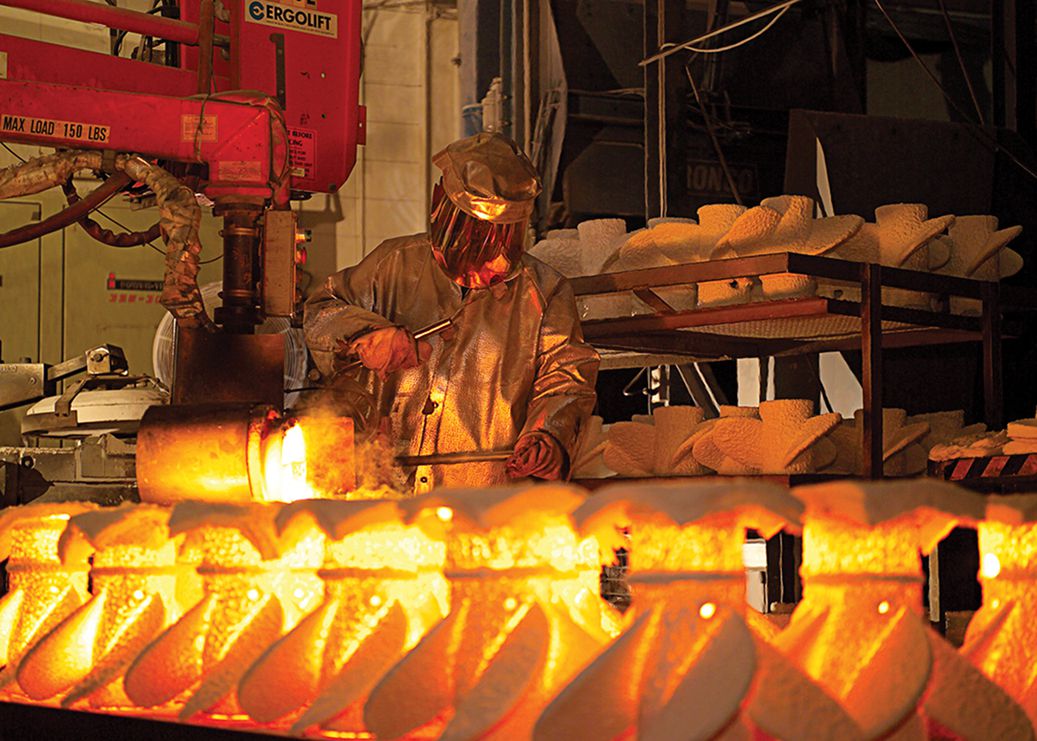Article Courtesy: saltwatersportsman.com | Originally Published: 12/20/2016 | Click here for original article
Pick The Right Propeller for Your Boat
Choosing the right outboard propeller can be perplexing, but it doesn’t have to be. In propeller designation, diameter is the first number listed, followed by pitch. Diameter is measured across the outer circle of the blade tips, while pitch is the distance a prop theoretically moves forward in a single revolution. So, a 15x17x3 designation indicates a 15-inch diameter and 17-inch pitch with three blades.
“There is no perfect propeller that does it all,” says David Meeler, Yamaha Outboards propeller information manager. “There are too many variables in boat design, and performance. Each propeller is a compromise. You have to give up a little of one aspect, such as top speed, to get more of another, like acceleration.”
According to Meeler, the focus is on pitch. One inch of pitch equals approximately 150 to 200 rpm at wide-open throttle. Outboards have a recommended WOT and the right prop keeps the engine in that sweet spot. The wrong propeller causes the engine to labor or over-rev, shortening its life and decreasing performance. For nearly all Yamaha four-strokes, ideal WOT is 5,700 to 6,000 rpm, Meeler says. So if your boat is currently revving to only 5,400 rpm, subtracting 2 inches of pitch should put it in ideal operating range.
“Diameter can have as much impact as pitch,” Meeler explains. “All things being equal, one-quarter inch in diameter equals the same 150 rpm change associated with pitch. That’s because of blade surface area. A larger diameter increases the blade surface, which contacts more water. But it’s also more difficult for the engine to move the prop as diameter increases. That’s why in a family of propellers as the pitch increases, diameter generally decreases.”
A propeller only performs when water is on the blade. So consider the shape, angle and number of blades. Meeler uses the image of a two-by-four to illustrate the concept of rake. Sliding the board through the water skinny side first is easy. But trying to push it through on the flat side is much more difficult. Having a lot of rake is similar to pushing against the flat side of the board. Conversely, the quicker the engine spins up (the less the rake), the faster the boat moves through the water.
Cup, the curling or bending of the blade tips, will also impact performance because shape influences how water comes off the blade. Cupping can add grip and enhance bow rise, but too much can add drag. With cup, like rake, a happy medium is usually the best combination.
The total number of propeller blades will also impact overall performance and top speed. Fewer blades are more efficient. Again, the choice must be balanced against the performance objectives, boat design and normal use.
Consult engine performance bulletins for your boat model and dealer recommendations before making a final propeller decision. If necessary, have a prop shop fine-tune them some more after extensive testing under normal loads and conditions. And remember: Dialing in a propeller is an art, not an exact science.










